Conservation
Conservation and environmental stewardship are at the core of our mission. Learn about the Zoo’s local and global conservation work and green practices. Discover how the Zoo is conserving multiple species and ecosystems – and how you can help save the American burying beetle, New England cottontail, Matschie’s tree kangaroo, and many more.
Read Our 2024 Conservation Impact ReportConservation Impact: Local and global programs
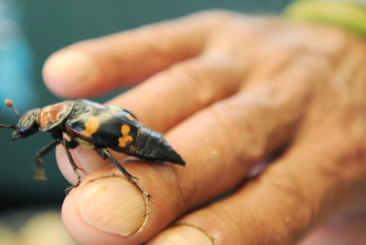
American Burying Beetle Recovery Program
The American burying beetle has drastically declined in numbers and range. RWPZoo continues to monitor reintroduced beetle populations, and supplement annually with captive-raised beetles.
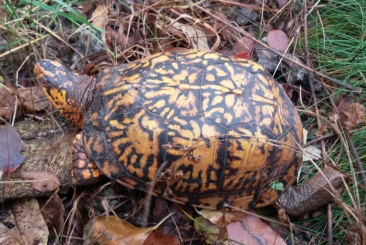
Eastern Box Turtle Breeding Program
Starting in 2019 a cooperative program between RIDEM Division of Fish and Wildlife and the Roger Williams Park Zoo was started to house and breed eastern box turtles, a Rhode Island native species.
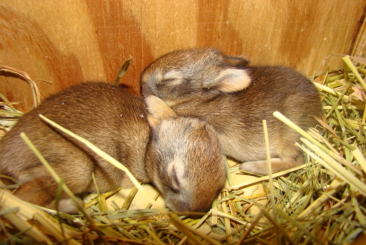
New England Cottontail Rabbit Repopulation Project
The rare New England cottontail is now a threatened species and is getting much-needed help. The Zoo together with regional partners formed the Captive Breeding Working Group as one potential solution for saving the New England cottontail.
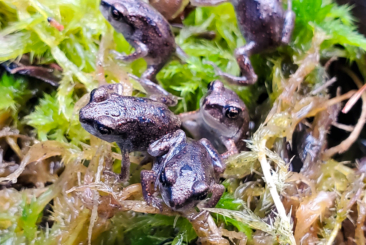
Operation Spadefoot Rhode Island
Meet the state’s rarest toad – the Eastern spadefoot. In Rhode Island and much of New England, populations of this species are dwindling drastically due to the loss of breeding habitat. But today there is hope!
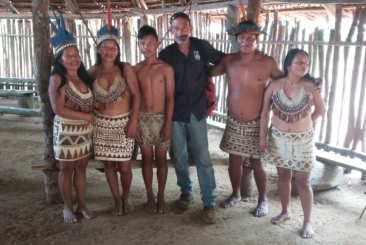
Project SELVA
Project Selva works with indigenous communities in the upper Amazon Basin of Peru to help provide a continuous revenue stream that does not involve timber harvest or oil extraction.
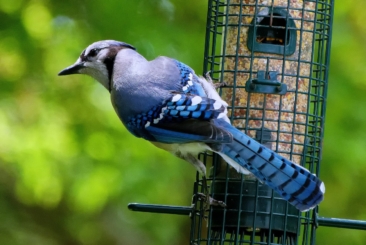
Songbird Conservation
RWPZoo participates the North American Songbird SAFE program. This program works to reduce threats to North American songbirds through education and conservation efforts. Check out our live bird webcam, learn about the SAFE program, and discover ways you too can help birds.
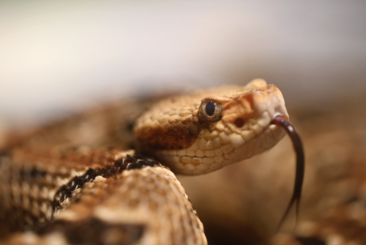
Timber Rattlesnake Recovery Program
This species, an integral part of the food web is seriously threatened in all New England. RWPZoo has agreed to receive and hold Timber Rattlesnakes from endangered New England populations.
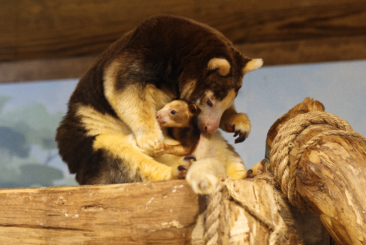
Tree Kangaroo Conservation Program
Native to the mountainous rainforests of Papua New Guinea this critically endangered species needs our help. RWPZoo has long supported wildlife and habitat conservation programs including a close partnership with the AZA Tree Kangaroo Species Survival Plan (SSP) breeding program, Tree Kangaroo SAFE Program, and the Tree Kangaroo Conservation Program.
AZA Collaborative Programs:
Saving Animals from Extinction (SAFE) Program
One of the most powerful tools to help threatened and endangered species is the Saving Animals From Extinction (SAFE) program managed by the Association of Zoos and Aquariums (AZA). SAFE is featured at all 229 AZA-accredited institutions, including RWP Zoo, with the goal of engaging and educating visitors about our conservation initiatives, and how they impact local, regional, and global environments. The SAFE programs include educational and veterinary components, habitat-friendly marketing strategies, key partnerships, and long-term goals.

SAFE Programs Partners:
- SAFE Andean Highland Flamingo
- SAFE Cheetah
- SAFE Giraffe
- SAFE Jaguar
- SAFE North American Monarch
- SAFE North American Freshwater Turtle
- SAFE North American Songbird
- SAFE Red Wolf
- SAFE Tree Kangaroo of Papua New Guinea
Today, visitors at the Zoo can learn about over 100 different species, many of whom are on the International Union for Conservation of Nature’s (IUCN) Red List, ranging from “Critically Endangered” to “Near Threatened.”
Species Survival Plans (SSP)
The Zoo actively participates in 41 AZA Species Survival Plans® which propagate endangered and threatened species in zoos, including the red wolf, Matschie’s tree kangaroos, snow leopards, wrinkled hornbill, and others. SSP’s are cooperative species population management and conservation programs undertaken for threatened or endangered animals by AZA member institutions. The goal of this SSP and all Species Survival Plans® is to build and maintain a healthy and genetically diverse population.
More Global Conservation Initiatives
- Snow Leopard Trust
- New Nature Foundation: The Kibale Fuel Wood Project and Kibale Eco-Char Initiative
- Environment Council of Rhode Island
- Rhode Island Natural History Survey
- Ocean Project
- Grevy’s Zebra Trust
- Action for Cheetah – Kenya
- Cheetah Conservation Fund
- Red Panda Network
- Wild Nature Institute
- Cockscomb Basin Wildlife Sanctuary
In the past 25 years, the wild African elephant population has dropped from 1.6 million to fewer than 500,000.
RWPZ’s Role in Elephant Conservation
Roger Williams Park Zoo currently has three female African elephants, Alice, Ginny and Kate, as part of our Fabric of Africa exhibit area. Having these wonderful creatures in our Zoo not only brings people closer to nature, but also makes it possible for us to educate the public on elephant conservation issues and urges them to take action locally.
Our elephants also aid us in the research of elephant reproductive cycles. We had tried for a number of years to artificially inseminate one of our females to support the captive elephant population. This procedure was unfortunately not successful. However, we continue to provide samples in support of this crucial contribution to animal research.
RWPZ: Our Global Impact
Over the past 12 years, we have contributed thousands of dollars to the following elephant conservation projects:
AZA Elephant Welfare Initiative
- While supporting conservation programs in the wild, Association of Zoos and Aquariums (AZA) institutions are also caring for 147 African and 141 Asian elephants in 62 AZA-accredited institutions.
International Elephant Foundation
- The International Elephant Foundation is a 501c(3) nonprofit organization that provides financial support for a wide variety of elephant conservation and related scientific and educational projects worldwide. Roger Williams Park Zoo supports this organization with an annual gift of $5,000.
- To date, the Zoo’s contribution is $50,000.
Tanzania Conservation Research Program (TCRP)
- Dr. Charles Foley began The Tarangire Elephant Project (TEP) in 1993 as part of his study of the effects of poaching on African elephants. He has been collecting demographic data on the northern sub-population of elephants almost continuously since then. Dr. Foley and his staff know more than 800 elephants individually, which is probably the second largest elephant database in Africa – second only to that of Amboseli National Park. Important research focuses on the impact of poaching on elephant social systems, and is the first project to carry out hormonal studies of female elephants in the wild. Roger Williams Park Zoo is funding a permanent in-country employment position to foster a positive human-to-elephant relationship, and teach villagers how to coexist peacefully and safely with elephants.
- To date the Zoo has donated more than $100,000 to this project.
- We are thrilled to share that the U.S. Fish and Wildlife Service announced a near-total ban on the commercial trade of African elephant ivory in the United States (the world’s second largest illegal ivory market). This final rule, effective July 6, 2016, restricts the sale of ivory to only legally imported, genuine antiques and musical instruments, as well as limit the import of sport-hunted trophies, prohibits the sale of ivory that was part of a move or household inheritance, and places prohibitions and restrictions on foreign commercial and noncommercial enterprise. These measures will ensure a future for elephants in the wild, and help to significantly reduce the rampant killings in their native habitat.
How YOU can help
- Your support of the Zoo through the purchase of memberships, admission tickets, and participation in our fundraising events helps to support our elephant conservation efforts locally and throughout the world. In addition, please read below about another very important initiative that the Zoo is undertaking this summer, and consider becoming an active elephant conservationist in your own local community.
- Join the Herd: RWP Zoo partners with the Wildlife Conservation Society’s 96 Elephants Campaign to raise public awareness of the elephant poaching-crisis in Africa. Poachers kill about 96 elephants each day for their ivory. Poachers carve the ivory into intricate designs and sell to unknowing consumers throughout the world. You might be surprised to hear that the United States is the second largest illegal ivory market in the world, next to China as number one.
Scientists estimate that at least one-third of the world’s known amphibian species are under the threat of extinction. Never in documented history has an entire class of species faced such rapid extinction in today’s global amphibian crisis. The World Conservation Union (IUCN) estimates that at least one-third of known amphibian species could become extinct.
While habitat loss, climate change, and pollution all contribute to the threat, researchers have found that a fungal disease known as Chytridiomycosis (chytrid) is proving exceptionally deadly and is believed to be the major cause of amphibian species’ decline. Experts agree that the only way to prevent the most threatened of these species from becoming extinct is to breed them in captivity until the chytrid epidemic either runs its course, or methods can be found to eradicate it.
Roger Williams Park Zoo has been a supporting partner of The El Valle Amphibian Conservation Center (EVACC) in Panama for seven years. Spearheaded by the Houston Zoo, the EVACC receives support from a number of other Association of Zoos and Aquariums (AZA) zoos and aquariums, academic institutions, and international conservation organizations. The Center focuses on the research, captive management, and exhibition of western Panama’s endangered and threatened amphibians. A major goal is to ensure that the people of Panama continue to manage these local endangered populations into the future.
To save frogs, you have to be able to feed them
To successfully maintain a captive population, the animals must have a healthy diet. The EVACC’s existing method of capturing hundreds of insects for the amphibians each day was becoming very time consuming, threatened to deplete the local populations, and would not have been sustainable as the number of rescued and bred amphibians grew.
From 2007- 2010, Zoo director of conservation programs Lou Perrotti, led efforts at the Center to establish captive colonies of native invertebrates to provide an efficient food source for the rescued amphibians there. With funding and additional staff from Roger Williams Park Zoo, Perrotti drew on his invertebrate expertise to build a rearing facility at EVACC. He taught invertebrate husbandry techniques to Center staff so they could properly feed the endangered amphibian species that they rescue and breed.
What is the status of the project?
The success of EVACC and the need to expand capacity to establish assurance populations (captive populations of amphibians at risk) in Eastern Panama prompted new partners to establish the Panama Amphibian Rescue and Conservation Project (PARC) in Gamboa. In 2011, a $6,100 grant from Disney’s Wild Animal Kingdom made it possible to purchase materials needed to improve the insect breeding facilities, support a staff person dedicated to the insect breeding program, and cover expenses for Perrotti and his partner from Toronto Zoo, Tom Mason, when they made their annual spring trips to oversee the project.
Roger Williams Park Zoo invested $3,000 per year from 2007 – 2012 to develop and support the invertebrate project. Other resources included a previous grant from Disney, funds contributed by the Association of Zoos and Aquariums Terrestrial Invertebrate Taxon Advisory Group, and by our Roger Williams Park Zoo’s chapter of the American Association of Zoo Keepers.
The PARC may serve as an in-country ex-situ program model to other countries facing a drastic loss in amphibian populations in the future, as conservationists around the world try to halt the extinction of these species. Now that the facilities are set up and running on their own, RWP Zoo continues to provide consulting support to the project, with hopes of increasing the number of insects produced and replicating this project in other regions of the world.
Questions? Contact Louis Perrotti, director of conservation programs at Lperrotti@rwpzoo.org or call (401) 785-3510 ext. 335.
Chilean Amphibian Conservation Program
RWPZ’s efforts in Panama gained recognition and led to us becoming a supporting partner of The Chilean Amphibian Conservation Center, spearheaded by the San Antonio Zoo since 2018. In 2019 members of both zoos traveled to Valdivia, Chile, to install the first of a series of labs as breeding facilities for the endangered amphibians and one for invertebrates used as feeders. The Center receives support from several other academic institutions and international conservation organizations. The Center focuses on the research, captive management, and conservation of endangered and threatened Chilean amphibians. A primary goal is to ensure that the people of Chile continue to manage these local endangered populations into the future.
Quarters for Conservation
Your visit to Roger Williams Park Zoo isn’t just an adventure, it’s an investment in the future of wildlife. 25 cents from every general admission tickets is directly contributed to conservation efforts, both locally and globally. Thank you for helping making a difference!
Working Together To Save Wildlife
Roger Williams Park Zoo has a mission to conserve wildlife and wild places. But we cannot do it alone! We want to empower every individual to help us in saving endangered species, and preserving our environment.
As a non-profit 501(c)3, your support provides world-class exhibits, state-of-the-art animal care, environmental education, and significant contributions to help us save wildlife and wild places.

